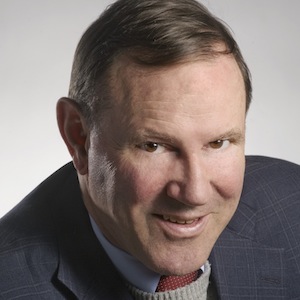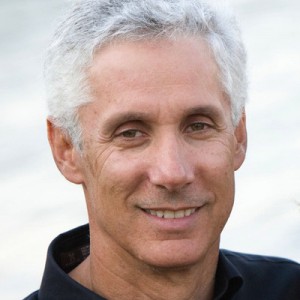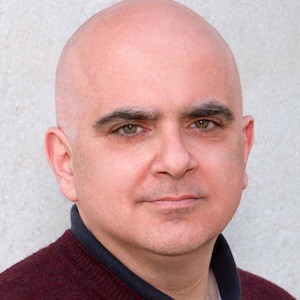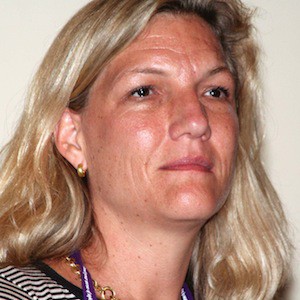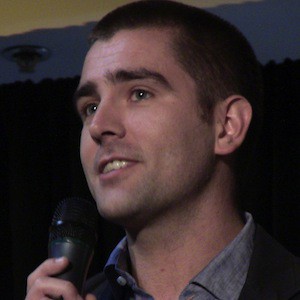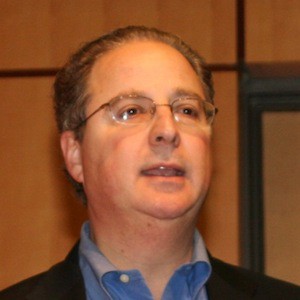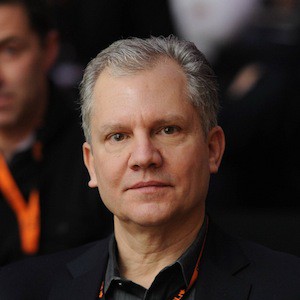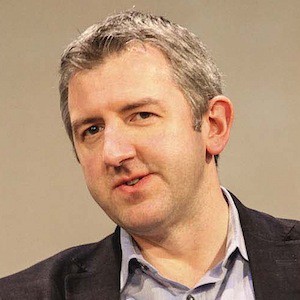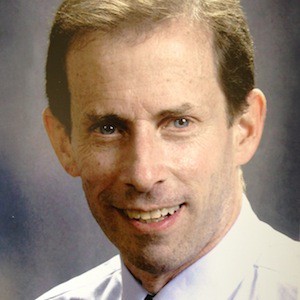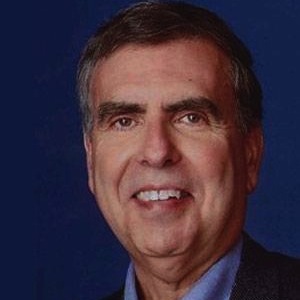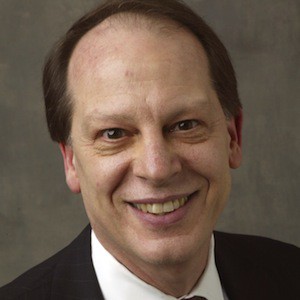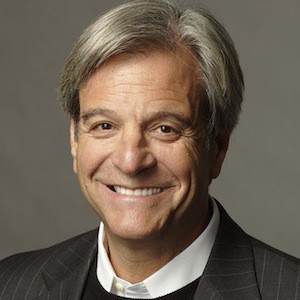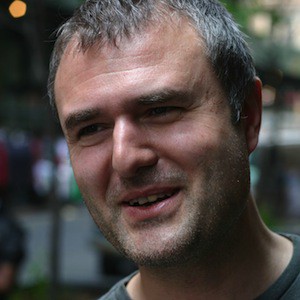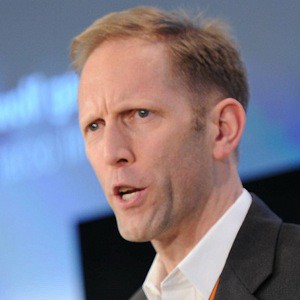Martin: Here we are, on April 4th, 2013. Paul Sagan, John Huey, Martin Nisenhotlz at The Washington Post, interviewing Don Graham. Why don’t we go back a ways, Don. I don’t know whether you had much interaction or did very much here. But The Post, well before the web came about, was invested in a company called Legislate.
Don: Yeah, 1982.
Martin: One of the things that we’ve found is that newspaper companies, including The New York Times, DOW Jones, had these very early B2B investments. Can you talk about Legislate?
Don: I will. But since Huey’s here, I have to tell you my initial story that I’ll forget to tell you otherwise. Martin knows very well, the other two of you know pretty well, a guy named Alan Spoon, who now lives up in Boston, near you.
John: We interviewed him, about two weeks ago.
Don: That’s great. Alan was, I don’t know, a 1970 71 graduate of MIT, physics major. He went to Harvard Business School and MIT Law School or the other way around. Maybe Harvard Law School and MIT Business School, all by the age of 23. He came to The Post from BCG, where he’d been the youngest partner in the history of BCG. He and I talked some about the world wide web, when it first comes into being. But he’s the one who’s on it, who has a PC, who is looking at it. One day we’re having breakfast and he says, “Come on over to my office and I’ll demo the world wide web for you.” He typed in the URL for Discover. No, what was the Time Inc.?
Martin: Pathfinder.
Don: He typed in the URL for Pathfinder, which was the Time Inc. portal.
John: Which Paul was running.
Paul: Which Walter and I were running.
Don: What happened was, we sat there. He said, “Bill Casey spends the most time on the Internet of everybody here at The Post. Reads it with a book in his hand.” We sat there for about 10 minutes and the damn thing didn’t load. But that’s my first memory of the world wide web. Even so long ago Huey wasn’t there.
John: No, I was there.
Don: I thought you were at The Journal
John: I was at Time by the time.
Don: 94 95?
John: Yeah, I went to Fortune in 88. But the expression, “Watching paint dry,” came up often in those days, when you were downloading anything.
Paul: There was no broadband.
Don: I think we had a 9600 baud modem. We thought we were hot stuff. That’s a great place to start, Martin. It does remind you how long ago the people running newspaper companies were interested in the digital transmission of information. Kay Graham, then our CEO and our CEO until 1991 and a career newspaper person, spent the whole of 1981 recruiting a chief operating office for The Washington Post Company. And was really happy when she hired a guy named Dick Simmons, who you remember. I don’t think he knew either of the two of you. Dick was recruited. One reason that Kay liked Dick was that Dick was the Vice Chairman of Dun and Bradstreet. He’d been the CEO of Moody’s, among other earlier jobs. Dun and Bradstreet, the purveyor of credit reports. We used them constantly. Every business in the country. They had put their credit reporting online. They’d stop sending out paper. They transmitted computer to computer. They knew a ton about the electronic transmission of information in 1981.
Literally, the first thing Dick did was to hire Alan Spoon as our VP of planning and whatnot. Alan and I just hit it off. He came in as corporate. But he and I, these two young Turks at the time, we started having breakfast every week talking about the future, talking about where the Post was going to put its money, mostly. Legislate was one of the first things that came up. It had been started by an entrepreneur from Texas named Kurt Grove. Alan told you the story. It was a “Spoon acquisition.” Alan found it, or somebody brought it to him, but he immediately saw the significant potential for the Washington Post Company.
It was a mainframe database of everything, of yesterday’s “Congressional Record,” “Congressional Hearing Record,” and “The Federal Register.” The customer might be the Embassy of Nigeria looking to see if they were mentioned. So, the customers were corporations, lobbyists, lawyers. Legislate kept taking in other government texts. It did pretty well for a while, made a little money for a while, and then drowned in the Internet. When Newt Gingrich opened the record of the House to the public, it just didn’t have a business anymore.
Martin: Which was an interesting first lesson, in a way.
Don: Yeah, it was one of a constant number of lessons. Warren Buffet was our lead director. Actually, or in reality, through the 80s, there was a significant amount of time when in he was on the board of CapCities because he bought 20 percent of their company. But in effect, he was always our lead director. Kay had a business meeting where the concept of lead directors, and a new one was discussed and said, “Well, I have a lead director who is not a director.” [laughter]
Don: The reason I brought that up was World Book. He bought, among other things, the World Book Encyclopedia, which is toast.
Martin: Many of the newspaper companies during that era were investing in consumer online services called videotex and teletext services, Knight Ridder, Times Mirror, and others. You guys, at least according to Alan, decided to stay away from those services.
Don: We kicked the tires and did not invest.
Martin: Do you remember why?
Don: I do.
Martin: His recollection was he didn’t think it was a very compelling consumer product.
Don: He didn’t like the product. It had, from everything we could learn, very little take up among, there was an experiment in Britain, as I recall…
Martin: Well, Ceefax and Prestel were the two British services. The environment there is very different because people license TVs, so the TV set manufactures had more of an incentive to build them in.
Don: We owned then, and still own now, Channel 10 in Miami, so we had a few people who lived in the market. We had no inside information from Knight Ridder. But what we heard from people was that the people in Coral Cables just weren’t buying it much and weren’t using it much.
Martin: So, now these videotex services fail and the nascent online services come along, and one of them is here.
Don: Right.
Martin: Did you have any interaction with America Online?
Don: We had tons.
Martin: Can you talk about that?
Don: We had Alan and we had your friend, Ralph Turkowitz, who was…
Martin: That’s a missing interview.
Don: Ralph is now a very successful VC in this area working at, I believe, ABS.
Paul: Yeah. I have his contact info.
Don: Alan and Ralph knew Steve and Ted Leonsis very well. They knew Steve, early days when AOL was a struggling third. I remember we took one trip to Columbus, I can’t remember who I took it with, to look at Compuserve and talk to the H&R Block people. Compuserve had a very sensible model, which is business customers and business information. AOL was always viewed as a struggling third. I, myself, was a very late adopter. Alan was so engaged personally in PCs, I didn’t think I could add anything. I was a late PC adopter, and I can’t remember the year, but when I became a user, I immediately became a heavy user through AOL. AOL was my first email address. It was everybody’s growing up experience, including accessing the Internet. They were the logical partner for us to try to do things with electronically, but they had a dually high sense of their own worth. It was very hard. You had people bidding to make a deal and it was hard to make a deal, and it should have been hard to make a deal.
John: Don, you’ve always been involved from early on in strategic issues. Can you recall sort of the arch of your awakening to the web and the balance of when you first saw it as opportunity and when you first saw it as a threat? Was it simultaneous or did it come sequentially? Clearly it was both. Just the arc of how you came to realize just the nature of the threat.
Don: As I say, as Martin’s good question led us back to, somebody told me there was a 1946 issue of maybe Fortune with a cover story on the year 1950. And the cover photograph was a newspaper coming out of a wallscreen. This was an idea that had been talked about for years and its appeal. The idea of digital transfer of information to the home was obvious, and AOL was the first ratification that it was going to happen.
John: It was like the personal helicopter, except it actually happened.
Don: AOL, people disproportionately spent their time on chat rooms. They spent their time, certainly, on email, but it made it obvious that this was going to be a mass medium and that it posed both threats and opportunities. Alan and I were united in feeling, “We don’t want to just treat this as a threat. We don’t want to play defense. We want to see this as a big opportunity.” And we had Ralph. We were kicking tires on a lot of investments, start ups. And we had great luck in the early days. Ralph was a very good judge of teams and judge of founders.
Martin: So it was Ralph who founded Digital Ink? Because that was the first incarnation of WPNI.
Don: What happened was, failing to do a deal for a Post presence on AOL, and I wasn’t part of that. I think Alan handled that personally, I don’t remember any of the history there. But failing to make a deal with AOL, wanting to experiment, wanting to try delivering the Post and see what happened, we started a paid site.
Paul: It was AT&T originally.
Don: Exactly. Good for you. There’s a historian. If you remember, Jim Mansi, the Lotus guy went next to AT&T and started something called Interchange, which was a really good idea. Which was a network without any content. An AT&T quality, consumer network for anybody that wanted to put up their own site. We put up a Post site. I can’t remember, we didn’t charge the same as home delivery, but we charged meaningfully. And, my memory is we had 30,000 subs in 1994 or whatever it was. We were rolling.
Martin: That’s about what Alan reported, so I think your memories are…
Don: We were very proud of ourselves. And I made one really good decision in the process. I was the publisher of the Post and every Tuesday we met around a long table with all the business executives of the Washington Post. Over here’s the circulation person, the advertising person, the production person. And I thought to myself, “If the head of our digital effort becomes one more person sitting around this table, it is not going to work.” And we had Alan. So I said, “Alan, you and I both believe this is an opportunity, not a threat. We’re not just going up here to protect the classified ads,” although that was very much on our minds. “You take charge of this. Let’s take it outside the Post and you run it. The Washington Post has one weapon, which is you. You’re the most sophisticated guy in the media business.” Alan and Ralph, Ralph had been the head of IT at the Post but had moved up to corporate and was working with Alan on corporate IT, but also investments and projects we might undertake. Ralph was a hell of a lot of help to Legislate.
We were tinkering on a whole lot of fronts. We were early, highly successful investors in cellular technology. We owned the cellular franchise in Miami and we shares of the cellular franchise in Boston and Washington and a couple of other markets. We made over $200 million after tax in that business. That was one hundred percent Spoon and was very hard to do. In 1991, one of the worst stories, Alan and I just still moan about this, we won, briefly.
The FCC decided they would bring digital to cellular, and they would ask companies to do technology experiments in how it might work and one of our partners in the original D.C. cellular business collaborated with us on a technology experiment, and we won. One of three winners. We were rewarded a free franchise for the Washington Baltimore market, unanimously by the FCC. Unfortunately for us, none of the other two franchises went to an RBOC, so the RBOCs went to somebody on John Dingell’s staff. They made one call to the FCC, and one meeting later, the FCC reversed themselves and took our franchise away.
John: Welcome to Washington.
Paul: Ouch.
John: You mentioned classified and your focus on that. Can you just talk a little bit about what you saw and how it played out? The big question that everyone seems to ask themselves is could the newspaper industry have done anything differently, and what would it have been?
Don: Oh, yeah. He knows and I know. We sat successively on the boards of three companies, one of which is still in existence. One called New Century Network, which consisted of the very smart representatives of eight or nine companies, each probably the smartest person within that company, sitting around a table, I think all eight of them under the impression that they were going to run the business or that their ideas were so much better than anybody else’s that they should prevail. Then they would go back, and they’d review the plans with the CEOs being asked to put up all kinds of money to fund these investments, and the CEO would say, “I don’t want to do this. I want to do that,” or “Is this guy running the place any good? Let’s put in this better person I know.” The poor people. We saw the potential of a merged news site, and I think, in retrospect, what we should have done was leave you guys out. I don’t think that would have made much of a difference, but…
John: “You guys” meaning The New York Times.
Don: The Times had a different set of aspirations than everybody did.
Martin: Yeah, well The Times had by then taken its paper national.
John: Yeah, and you had less dependence on classified than all the metro dailies.
Don: There were three initiatives. There was New Century Network, which was about news. There was…
Martin: CareerPath.
Don: Yeah. I blocked it. I repressed the name for a moment. CareerPath, which was the biggest miss of all, which you couldn’t go wrong with, which was nationwide classified advertising, nationwide help wanted advertising. Then there was Classified Ventures, which was founded by us to be our representative in automobiles and real estate, and which we had good success with Cars.com.
Martin: And CareerBuilder, which we shouldn’t forget, because that came on the heels of CareerPath.
Donald: That was the evolution out of CareerPath.
Martin: That’s right, but it succeeded.
Don: With Tribune and Gannett and one other, maybe Times Mirror, said, “It isn’t going to work with nine of us. Let’s do this with three of us.”
Martin: And it did work.
Don: It worked, but all of those went wrong for different reasons. In the case of New Century Network, we had a very good joint idea, which was, “Let’s put up a news site that’s better than anybody else’s news site.” We just flat hired the wrong person to run it. I can’t even remember the guy’s name. Instead of taking the content from all these newspapers and hiring a team and saying, “OK. You’re just swimming in content and you could probably get the newspapers to produce more stuff uniquely for you,” nobody was thinking about updating or whatnot, but you could have been much better than Yahoo News or AOL News.
Paul: But you couldn’t get it done.
Don: We didn’t get it done.
John: Was part of it a failure to recognize who your real competitors were? You were still living in a world where you thought of yourselves as competing with each other for advertising dollars and hegemony in the news business.
Don: The metro newspapers never really competed with each other. Sorry, there were companies that did compete with each other in certain markets, and that was always a hang up.
John: But did you effectively cooperate with each other?
Don: No. But the reasons were not competition. It was stupidity.
John: Or ego or pride.
Don: There was one. In retrospect, the smartest guy in the room was Charlie Brumback of the Tribune Company, who was the guy who had bought five percent of AOL for nothing when Case came to him and said, “We want one strategic investor,” and Charlie was smart enough to make the investment, and he was smart enough to stick with it, and then they were smart enough to hedge it.
Martin: Then they bought Times Mirror, which was not too smart. [laughs]
Don: But long before Times Mirror, they invested in many other digital start ups, of which the only one which is still around is Peapod. They didn’t lose money compared to the money they made in AOL. But Charlie, having now some acquaintance in the tech world, brought in Vinod Khosla, who then was a partner at Kleiner Perkins. Did you and Alan go over this story?
John: No.
Don: Vinod had a plan. Charlie’s plan was let Vinod own 20 percent of NCN and let him run it, let him hire the CEO and whatnot. I was a skeptic, and I later wrote Charlie and said, “I think you were right, but I know I was wrong.” I thought these companies are in the news. The thing about a VC buying in, was that the VC was going to have to get out, and I’m sophisticated…
Paul: In the end, that didn’t work and he went and did Excite@Home.
Don: Vinod did lots of things, and some of them worked and some of them didn’t. He’s still doing lots of things. But having Vinod in the room would have been sensational for us.
John: You were hitting on something there. You almost finished the sentence that said, “But we were in the news business.” If you look at the news business and you go back all the way to that experiment in Coral Gables that you referenced, one of the things that they told us they learned in Coral Gables was that people liked the system OK, they just weren’t particularly interested in the news on the system. They liked other things, interactive, what were some of the…?
Martin: They like communicating, which is what Steve nailed.
John: Games and communicating and community. They didn’t really like the news business. So, as we look at the history of when the news business collided with digital technology, one of the things that we’ve come to realize, which is pretty obvious, is that the news business was always part of another business. You had this aggregation in your newspaper where you gave us classified, stock quotes, sports scores. The Web and social media has had a real fragmenting effect, which brings us to today and the news business. Your company is a legendary purveyor of high quality, verified news, serious news information, politics, economics, international. What is the future of that business, and where do we go from here?
Don: I’m old enough that I know a different story of The Washington Post than you do. The story everybody knows about us starts with Watergate, or about that time. I was born in 1945, and the Post was the third newspaper in a four newspaper town. I was a little kid, but I was quite interested in the conversation around our dining room table, which was about comics, which was about sports writers. The day that saw to it that The Washington Post would survive for the next 60 years was March 17, 1954, when the Post bought the other morning paper in Washington, the Washington Times Herald, which was losing even more money than we were. Newspapers had bought other newspapers in a market, and in general, the combined paper lost quite a lot of circulation. For some reason, in this case, that didn’t happen. They added so much that my dad, believing that we wouldn’t add that much circulation, had not bought the presses of the Times Herald, and they had to double back and say, “We changed our mind.” People used to tell me stories about how they threw bundles of newspapers out of the third floor windows at the Post because they just couldn’t find a way to get them into the trucks, they needed so many papers.
The Times Herald had been the New York News or the New York Post of Washington. It was a blue collar paper, heavy on crime. It had the largest circulation, but the least advertising, in Washington, and a crazy combination of this, in our minds, sell the high quality paper with this blue collar paper, produce something that covered the hell out of all of it. We had more comics than any paper in the United States. We had a fabulous sports page.
John: So you were the original high low.
Don: Yeah. We had way more penetration of the market than any other paper in the country, in our size. Newspapers weren’t just the high brow…
John: But that’s my point. That other stuff was subsidizing. You were able to afford to produce that news because you had such penetration in those markets.
Don: Something happened after 1954, John, that’s very important to the backstage of this story. Everybody has to remember that newspaper circulation was going down in the United States. It wasn’t quite going down at The Washington Post, but it would have. Before there was an Internet, before there was an AOL, the circulation of newspapers was going down.
John: And afternoon papers were folding.
Don: Yeah, but the circulation of the surviving papers was going down. After all that happened, most dailies’ newspaper circulations were going down in the early 1990s. I think the diminishment of competition and the fact that an interesting thing happened, I know, at this place, and I think at every place. I came to work on the news staff where a couple of the principal beats, I think including the White House, were covered by people who never went to college. Eddie Folliard, our White House reporter for 30 or 40 years, was not a college graduate. I know Al Lewis, who covered the police department of the Post for 50 years, and who starts the Watergate story, never went to college and never wrote a line that appeared in The Washington Post. He always called the rewrite man. No one else did. We got better and better educated, our staffs. Washington, which is a fabulously educated market, has 40 percent college graduates, but the Post newsroom is 100 percent college graduates. We stopped being as interested, all of us, including me, in the comics, the horse racing, which used to be a big deal.
John: Annenberg did pretty well with that.
Donald: Yes he did. The popular side of newspapers was de emphasized with the years, and that had something to do with the fact that others saw the appeal. For example, games on the Internet. And newspapers, the number one best seller in the United States in the year 1922 or 1923, the year it came out, was The New York Times Crossword Puzzle Book, when crossword puzzles were first invented.
Martin: I want to connect the dots here because what you’ve said really resonates with another interview we did, which was with Jonah Peretti. You’re on the board of Facebook and Jonah’s business is built, in large part, on the social distribution of news and information. Someone, speaking about Jonah, said his great insight was high low. In other words, you could go to Buzzfeed and you can look at the 25 most interesting pictures of animals at the same time as he’s now beginning to cover the more “serious” stuff. He’s doing it in a way that pushes this content through distribution channels in a much more modern context than traditional journalism organizations have ever done. Just looking at the percentage of traffic coming from social sources.
Don: The other thing Jonah illustrates, he personally is a very good illustration of it, or Mark Zuckerberg illustrates, is those guys are first rate technologists. Alan and I and you had a lot of the right ideas in 1995. We knew this was a new business, we knew it presented opportunities as well as threat. We wanted to really crank and become good at the delivery. What I think we did not understand was that we needed somebody like Mark or Jonah who you couldn’t have hired.
Martin: Let me chase down that because this has been a theme. One of the things that Eric Schmitt basically said, the most compelling thing he said, was, “These institutions don’t have engineers.” I’m paraphrasing now.
John: He said their big failing is they don’t have any engineering culture. He said, “I’m not saying engineers need to run the companies, but they don’t have a way of understanding or appreciating the importance of engineers.”
Don: He is right. You can point to a lot of things and say, “That was our central failure.” To me, that is one of our central failures. We actually probably should have understood this better than anyone. If you go back and read Kate Graham’s book…
Martin: That was a great book.
Don: …she comes to work at the Washington Post in 1963 and you walked in the door at that point and there was no question what the central issue was. The central issue was they couldn’t get the paper out. We were so hamstrung by labor problems and technology problems that four nights a week we were more than an hour late in getting the paper in the trucks to get it to the customers with a newspaper that if it’s 20 minutes late it’s useless because the customer’s gone. Part of the book that has to do with the Post, the first third of it has to do with solving that problem. How we could have not understood that this is a different business, that you’re competing with AOL.
John: How much of that was the Innovator’s Dilemma? You have a huge legacy business that’s very profitable and you have to look at the cannibalization of your business.
Don: I wish I had that as my excuse. Alan was probably the third person to read “The Innovator’s Dilemma”. He gobbled up this stuff and he was talking about it the minute it came out.
Martin: It was Russ Lewis’s Bible in the mid ’90s.
John: Maybe “The Innovator’s Dilemma,” maybe understanding it, everyone understands it intellectually, but maybe it’s a disease that isn’t totally curable.
Don: It’s funny. I just listened to Christensen give a talk about another business. The theory of “The Innovator’s Dilemma”, is it’s so hard for the company because you have to lose money or eat into your own profitability. We were willing to do that. We are uniquely structured so we didn’t give a damn what we made for any given quarter or any year. That remains the strength of the place is, as a business, the Washington Post Company can be genuinely, no kidding, long term minded. If somebody said to me there’s a way out for newspapers but you’re going to have to lose $100 million a year to get there four to five years from now I would sign up for it in a minute.
John: Spoon made that point about you specifically. He said we were different in that we had a guy that…
Don: It was Kay who set up the structure but I’ll take the credit. We really did lose a lot. We put a lot of money into the online college at Kaplan, Classified Ventures, God help us, CareerPath, and Legislate, other tech investments, some of which worked out very well. To Alan’s enormous credit, going back to Classified for a minute and showing how focused we were just on keeping the Classified business we had. Alan and I returned from a CareerPath board meeting that you must have been at and he said, “Don, this is not going to work. They are never going to get a good product to market in time and we have to look elsewhere.” Ralph found…
Martin: Junglee.
Don: Junglee, which had come to us as a threat but listened to Ralph and Alan and decided that they would be way better off partnering with us. They built our online help wanted system and we got into the field three years before the other newspapers did, to our enormous benefit. It’s sort of a joke but we’re still number one in online help wanted business in Washington. The joke is there isn’t very much.
John: The truth is, we haven’t found very many stupid people going around interviewing these things.
Don: Yes you have. You’ve found plenty of people who weren’t smart enough, including me.
John: We found shockingly deep understanding and vision a long time ago. At Knight Ridder, which was the first one to go in the end, they were involved in all kind of visionary things. The Tribune that you mentioned, yourself. Dow Jones had a lot of things going on electronically.
Paul: But outgunned by the tech world and culturally not in the same place.
John: One of our timeline metaphors is below the line is the tide and it rushes and above it are swimmers. A few swimmers manage to swim with the tide but, ultimately, you know. My question is could this really have been much different from how it is today or not? That’s the big question we’re really trying to answer.
Don: I think Alan and I would give you the same answer. Your metaphor is a very good one and there was a very strong tide running in the other direction. I think it could have and should have been different, but I think it would have called for a very considerable imagination. You would have had to look at AOL and say the lesson of this is not the uses it’s being put to. The lesson of this is that it is being built by a kind of people we do not have in these walls and we’d better go get some. Gates, at that time, was going to everybody’s editorial board and saying good technology people won’t go to work for people like you. Good technology people want to come to work for Microsoft. He was wrong. Good technology people like to work on hard problems and news quickly became a very famous hard problem. Yahoo News, in its day, was a very considerable feat of building. We would have had to recruit, we would have had to pay like hell, and we would have had to be extraordinarily astute. There was a start up culture in Washington. AOL spawned a ton of little start ups and any of them would have been thrilled to have [indecipherable 39:02] .
John: MCI was here with a lot of technical…
Don Graham: That was different. That was Telcom type people. MCI did not spawn a start up culture, AOL did. Tim O’Shaugnessey, my son in law, who runs Living Social, and his three Georgetown classmates were AOL alums who saw the opportunity when Facebook opened its API and started another company that turned quickly, as the phrase is pivoted, and turned into Living Social. Tim is not the only start up investor in Washington but Tim is the definition of what we should have hired.
Paul: I just want to talk about, because you touched on one of those tides and that was Yahoo News and Reuters together, who weren’t constrained by consortia problems or business model problems, and the other, of course, was Cragislist who had no interest in the classified business. As he said, I just wanted my friends to trade couches in San Francisco. Talk a little bit more about Yahoo and Reuters and about Craigslist as a tide.
Don: I’m very proud. We were one of two votes against selling the AP to Yahoo and AOL in whatever it was, 1995 or ’96. It just seemed to me colossally stupid at the time.
Paul: Did it matter because Reuters was going to sell anyway?
Don: Reuters was owned by the British publishers and it might have gone a different direction.
Paul: They didn’t care about this market the same way.
John: The retail market.
Don: Yeah, but Yahoo is available where their papers are sold. It was self interested for Reuters and it was self interested for the people at the AP itself to want to sell to Yahoo and AOL.
John: Actually, we interviewed the Reuters guy who did the deal and, as the truth is, as he revealed, he was an investor in Yahoo, not he personally but his division of Reuters was an investor in Yahoo and they were trying to help kick start Yahoo.
Martin: Which is the same point Mike Moritz made.
John: They brought not just money to the venture, they brought content. By the way, just on a parochial note, I would like to observe that Henry Luce was also someone who understood the high/low. While he trafficked on the prestige of Time and Fortune all those years, he was mostly dining out on the profits from Life.
Don: And eventually People.
John: Life became people because when Life closed the same people who ran it started People.
Don: You’re exactly right.
Martin: Don, fast forwarding just a little bit because in addition to trying to figure out the past I think part of why we’re doing this is to try to look forward. One of the things that the technologists and the new media folks, the new journalism folks, continue to say over and over again is, “The traditional players still haven’t fully faced the fact that they have completely oversized cost structures, that technology and the whole nature of the way information flows in society and around the world has changed dramatically and yet the journalism institutions haven’t really caught up with that notion.” We heard a very compelling set of stories from the traditional side making the argument that journalism is expensive and it’s expensive for a reason and that mostly what the technologists and the new journalism people do is aggregate other people’s work. Can you comment on that, particularly thinking about it from the perspective of running one of these places that has hundreds of journalists to pay? What do you think?
Don: I think one of the other big dumb things we did in the early days is we started out as an aggregater. We had a deal with the Encyclopedia Britannica to do footnotes to all the stories in the Post so you could read the background on any given story. If there still was an Encyclopedia Britannica, that would be good today. We started out doing the obvious and it just struck me, it struck everybody. Think about Washington for a minute. I’m, among other things, the former sports editor of the Washington Post so I knew very well a lot of people read about the Redskins and now we’ve got a baseball team and a basketball team and whatnot, but a hell of a lot of people here went to Michigan or went to UCLA. We always got calls in the sports department saying you ought to cover the Big 10 more, there’s so many graduates. What an opportunity that was.
I thought of that with NCN. If you could just link from the Post sports page to whichever Detroit paper had better Michigan coverage you’d make a lot of people happy. We fell victim, not at the Alan Spoon level, but at the level of people who are measuring traffic. Why would you want to send the click to somebody else? The answer to that is, by now, very well known. Mark Zuckerberg doesn’t have a problem with that and we shouldn’t have either.
One of the questions that faces places like the Times and the Post, but I want to come back to local newspapers broadly, is is there any kind of a plus to a news organization in having really high quality reporting and editing? I’m pretty sure the answer to that is yes, but we have not figured out. One thing that we did, saying we wouldn’t, understanding that it was a mistake, was we now probably have a website that’s 60 percent newspaper articles and 40 percent other. In 1995, we had one that was 99 percent newspaper articles and 1 percent other. We all read a big experiment conclusively proving that reading newspaper articles is not the highest and best use of the web.
Now the question is, “Can the reporting resources of a place like this be put to the real service of readers?” Mark started Facebook thinking about students at Harvard, not thinking about Facebook and not thinking there’s a vision I have. The first Facebook page was like a blank slate. It was just a place to put up a tiny bit of information about yourself and see information about others and it evolved. He started thinking about users and the users told him, by their behavior, the data told him, how people were using it.
They told him every square inch of the home page what was being used and what wasn’t and he took away the stuff that wasn’t being used and added stuff and tried it and tried AB testing and then ABC testing and so on. They still, today, can tell you. That’s why the birthdays keep moving around. They keep looking at better ways to tell you which of your friends have birthdays today and which one draws more clicks and which one gets people to send more messages to their friends on their birthday.
The best work in the Post and the Times is still in the format of newspaper stories. This morning, my computer is sitting there, the print newspaper came to the door. I read the print newspaper. I have every morning of my life. I have habituated and I have personalized the Washington Post. I read it in the correct manner from the sports section out. I know exactly where the stories are that I like. I don’t go to the movies much so I don’t read as much movie reviews. My kids, that would be one of the first things they read.
I don’t watch as much TV as my kids do so I don’t read as much about television programs or what’s on TV. I read a little more about district politics, I read a little more about national politics, international affairs, than the average person does. I tailor the paper accordingly.
At the website, I’m a stranger. Every time I come back, it’s the same presentation for all of us and that was another big mistake. We have to present the best of what we have to offer in a way, in a format, that readers like to use. The only way we’ll do it is having people like you and, in our case, people like [indecipherable 48:26] , who is the most valuable player at the Washington Post. Shailesh, who is the VP of technology at the Post, I would say as a peer of Marty Baron. He and Baron will create the Post digital content in the future jointly.
He is as respected among those that know him in the newsroom. Nobody knows how respected Marty Baron is. Shailesh is, in his own world, is that good. He makes things happen. He’s decisive. He’s got a great team around him. The two of them are creating the most impressive site.
Martin: You said you wanted to come in on local.
Don: Yeah, let me go back to local. The most important thing that’s happened in the United States newspaper industry in the last year is that Warren Buffet’s bought 80 papers.
John: I was getting ready to ask you that very question.
Don: If he’ll see you, you ought to go talk to him or you ought to talk to Terry Kroger who is running the papers for him.
John: In his latest annual report, there’s a pretty good explanation.
Don: Couldn’t be clearer.
John: With the help of an elderly journalist I know at a large business magazine, I got some history of things that he said about the newspaper business over the years, which is all online, by the way. I didn’t know that.
Don: You talk to Carol, you’ll learn a lot.
John: I learned a lot.
Martin: Why is that the most important thing?
Don Graham: Because I think Warren has defined a local business model that is going to work. If it works in Omaha and Buffalo and Richmond. Warren writes in that annual report, If a paper doesn’t make money and isn’t on a path to make money and nobody thinks it can make money we’ll close it,” and he did close one paper that he bought among the several papers he bought with Media General. There was one he thought didn’t have an obvious profitable future and they closed it. He believes that he will be making money in Omaha, Buffalo, Richmond, Tulsa, Greensboro, long enough into the future that it’ll make money for Berkshire Hathaway, it’ll be returning profits, and that his view of digital is included in there.
John: It’s the monopoly franchise concept.
Don: Well, it’s…
John: It works in Little Rock. It works in Charleston. It works in all those markets you mentioned. Why isn’t it working for the Newhouses, Mobil, New Orleans? I mean, those are relatively small towns.
Don: Well, Steve is pursuing a different strategy, and I don’t know that.
John: And we did talk to Steve, so…
Don: I respect the Newhouses immensely.
John: Well, they were heroic in New Orleans after the…
Don: Yeah, unbelievable. But I have not talked over with them the decision to go to three days a week. I don’t know why they did that. Warren would say that doesn’t fit his model of the way things are going.
Martin: Don, we need to cover two more things. One is Kaplan and the other is your recent pay model. Let’s start with Kaplan. One of the other themes that we’ve talked a lot about with a lot of people is the subsidy model, which is to say a Bloomberg, a David Bradley at the Atlantic. However you want to describe the subsidy. By the way, David is not pursuing that model at all. In fact, he doesn’t like it. He’s pursuing a profitability model, just to be clear. For the record I wanted to say that.
Don: That is a great guy. One of the best owners who’s come into the business in years.
Martin: The point is that some people simply believe that these institutions cannot be profitable over time, putting Warren Buffett aside for the moment, in the local space. You have that in this company. In other words, Kaplan is a big, rich education company that can subsidize the Washington Post. But I take it from your body language and the way you’re looking at me, you just totally don’t believe that that’s a viable way forward. I’d just like to know why.
Don: Bloomberg is different. Bloomberg’s business is selling Bloomberg terminals to financial institutions and financial investors around the world. When they went into the business, they were competing with John’s old company, Dow Jones, and they were competing with Reuters. Both those organizations not only provided tons of data, they provided stories. When General Motors released its quarterly earnings, somebody quick filed a story on what the earnings were, how they compared to what anybody expected, and so on. Bloomberg had to sprout a news division, and did. It isn’t where Bloomberg makes its money, but it was regarded by Mike as a necessary part. You know more about this than I do.
John: It’s a strategic fit regardless of how you allocate costs and profits. If the core data business were threatened, I suspect the news business wouldn’t be quite so generous.
Martin: Robust.
John: Robust, sure. [laughs] But it’s a linked model. They’re not two entirely disparate businesses. You can sell people who want proprietary data, you can sell them the news also. You can argue that getting the news a minute earlier is valuable to a trader, which is their primary audience. Which is unlike Kaplan and The Post. They’re two different kinds of businesses.
Don: The Post Company, not The Post newspaper, has been diversified for years. We stayed in the TV business. We stayed in the cable business. Those are both bigger than Kaplan in profitability in 2012. The education business has a big profitable worldwide long term future. Whether Kaplan will is up to Kaplan. I think it will. You certainly could argue, in retrospect, that we were fortunate we didn’t spend the ’70s, ’80s, and ’90s buying other newspapers. You could certainly argue in retrospect, both these things are things having Warren on the board, we didn’t incur tons of debt. We sailed into the financial crisis with only $400 million in debt. By our very bad luck, it came due in February 2009. That was a squirmy couple months. We did refinance, so we have more cash and securities on our balance sheet than debt by a considerable amount. Our problems are not financial. Our problems are not the performance of our other businesses. Although you could say, if we were a $20 billion market cap business instead of a $4 billion market cap business, we’d be doing better.
Martin: You want The Post to be a growth oriented, profitable…
Don: Everybody…
Martin: I don’t want to put in your mouth, but…
Don: I was born in 1945. I grew up around the dinner table with people who were publishing an unprofitable Washington Post. It was no fun. They had the same people who ultimately were hailed worldwide as great journalists, but they couldn’t do a damn thing because they weren’t making any money.
Martin: Talk about the pay model. I would characterize you as one of the hold outs, in terms of pay models,
Don: The pay model…
Martin: Can you explain that?
Don: Sure. The pay model will work for The Washington Post. It won’t work nearly as well as it will for The New York Times, for the simple reason that The Times distributes nationally and therefore can offer every reader in the United States, the choice of being a print subscriber, which in turn makes the online package free or heavily subsidized. The Wall Street Journal can do the same thing. The Financial Times can do the same thing, because they have nationwide distribution models and very wealthy customers. The Post’s distribution model is more like The Boston Globe at Martin’s old company or other metro newspapers. But we are unusual in that we have very heavy penetration in Washington of the print paper, and very heavy readership around the country, of the website.
So we will forgo a certain amount of national advertising. If our traffic were to fall as much as The Times’ have, it would be bad for us. But the results at The Post will be pretty good. The Boston Globe, after a little less time on the pay model then The Times, has 28 or 29,000 people paying for content. The Times has hundreds of thousands. The Post will be in between.
But I don’t think the most optimistic people at the post would differ that we’ll be somewhat closer to The Globe than to The Times. Our aspirations are quite a bit higher than that for ultimate pay readership. But it looks like it could make a very big difference at The Times because the scale of opportunity is there. It should be a plus for The Post if we execute it right. I think we will execute it right, thanks to people I’ve talked about. Steve Hills and Katharine Weymouth have really thought this through. They are not doing it the way everybody else did. They’re doing it in a way that’s well suited to us. It will be successful but I don’t think it will be a huge difference maker.
John: We have a lot of disruptors that we look at and talk about. You have one in your own backyard that is high profile, Politico. What do you make of that? How disruptive are they? Are they significant?
Don: I admire Robert Allbritton and Jim Vandehei, John Harris, for the moxie to start it and make it successful. Jim and John really deserve the credit for a good editorial product. It does not make a big difference to The Post in either readership or advertising. It is selling one focused kind of advertising, where Roll Call and The Hill have been their principle competitors.
John: So it’s sort of a B2B?
Don: They’re selling corporate and advocacy advertising. That’s their business. They’ve done very well at it, but I wouldn’t say it’s made a big difference at The Post. It’s made a big difference to The Post’s political reporters. The New York Times doesn’t make a big difference to The Post, day in and day out. But obviously, every national and international reporter is reading The Times and saying, “How are we doing against them?” And our political staff feels the same way about Politico. But nobody’s making an either/or choice about subscribing to one or the other.
John: And all these disruptors affect the labor force. Because they hire away from all of us, from everything. Just like Huffington Post.
Don: Yeah. There’s only 24 hours a day and we all only have two eyes.
Martin: The attention economy, as Chris Cox at Facebook said.
Don: There’s two things that newspapers have going for them. If you go back to Addison and Steel or whatever your definition is of the beginnings of journalism in English, the dominant news sources had a lot of time spent and a lot of repetition. If Addison and Steel were publishing once a week or twice a week, a hell of a lot of people read them every time they came out. With The Washington Post or The New York Times newspapers, a lot of people read and read those, six or seven days a week. You can do that on the Internet. 42 percent of the United States audience of Facebook, and The United States audience of Facebook is 140 million plus, is on the site six or seven days a week. But even papers as good as The Times and The Post do not have people coming there that often and staying that long. I described, I was at my living room reading the print paper. I would guess I average between half an hour and 45 minutes, probably closer to 45 minutes, reading the paper in a given day. Except for people like me, on a trip, reading one out of town, we do not have people on the Internet site, consuming that much. That’s another question we didn’t get.
The other question we didn’t solve, at the beginning, was making the ads work in both media. The print ad in The Post or The Times or The Boston Globe or The Philadelphia Inquirer, still drives the shopper into Macy’s. I guarantee you the print ad in The Post does, with its, again, still very broad penetration of upscale people in Washington.
Retailers know that if they put an ad in The Post to sell shirts or shoes or mattresses, they will sell more. They know how many they sold the day before the ad ran, they know how many they sold the ad ran, and the next day. The ad pays for itself. We were expanding the reach of the advertiser by adding the website. But we did not put nearly as much attention into advertising creativity as we did to news creativity. And none of us has…
Martin: Well, that’s interesting. That’s another thing that Jonah Peretti said that he’s doing. He’s putting the advertising creativity at the same level as the news creativity.
Don: Yeah. Another guy who’s doing it is Tim Armstrong at AOL, who is the former head of display advertising at Google, Sheryl Sandberg’s peer, when she was running AdWords and AdSense. When Otis Chandler became the publisher of the LA Times in 1962, he later told me that the first department he addressed, he tried to modernize, was advertising art. He wanted good looking advertising to run in the LA Times and to produce better results for advertisers.
Martin: Well, on that note.
Don: Well, I wore you out, did I?
Paul: It’s great.
Martin: It was great. Yeah, thank you.
Don: Thank you.
